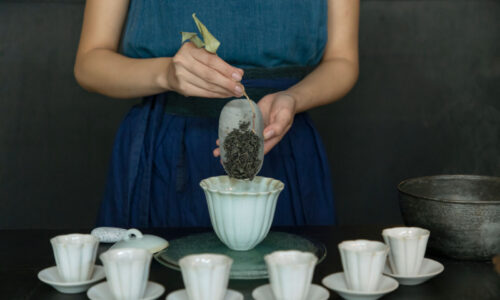
記事の前編はこちらRead Previous Page
“Temporal art” savored at Kashiya Kokonotsu (1st half)
A chance to savor the delights of the proprietor’s “Personal Favorites Series: Karukan” In an old-fashioned re…
2019.11.15 Rediscovering TeaINTERVIEW
The two-hour course offered at Kashiya Kokonotsu is more than just a meal—it is an experience. So immersive was it for me that I barely noticed how low the sun had dipped, and found my own senses heightened and clear. Afterward, I spoke with Mizoguchi, and asked her how Kokonotsu came to be and how she manages to create her own unique world of confectionery delights.
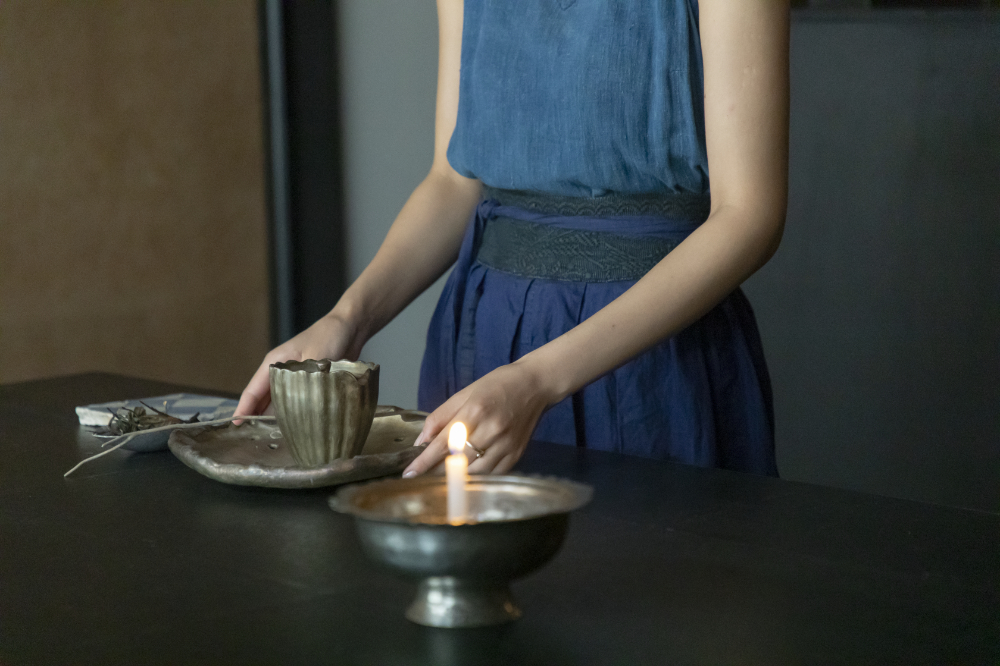
“We have always been a family that loves adzuki beans, so we always had them at home. My grandmother loved to boil beans, but more for the process of boiling them than because she wanted to eat them.”
Mizoguchi tells me that she used to take the mountains of beans her grandmother cooked and turn them into various culinary creations for the rest of her family.
“There was nothing I loved more than watching the delighted expressions on their faces,” she says.
The delight on her diners’ faces clearly motivates Mizoguchi even now and informs everything she does at Kokonotsu.
“Making confectionery to be taken away and eaten elsewhere is something I just don’t feel is part of my mission, so I don’t do it as a general rule,” she tells me. “I believe that my creations should be eaten right here—whether warm and freshly-made, or ice cold, or eaten with the hands. I also have the desire to show the world that there is more to Japanese wagashi confectionery than so-called “nerikiri” (sweets made by kneading and mixing sweetened white bean jam and glutinous rice flour) eaten using a traditional “kashikiri” sweets-cutter, so I try and serve my creations with a wide range of cutlery. While I do understand the magnificent artistry in manipulating small nerikiri sweets to express the moods of the seasons, I think it would be a terrible shame if people thought that was all that wagashi entailed. Japan has such contrasting and abundant seasons, giving rise to a rich range of fruits and vegetables. I have made wagashi using seasonal produce since I was a child, and I have the most interest in eating this kind of confectionery. It is this philosophy which motivated me to create this salon as a place to provide that sort of experience for others.”
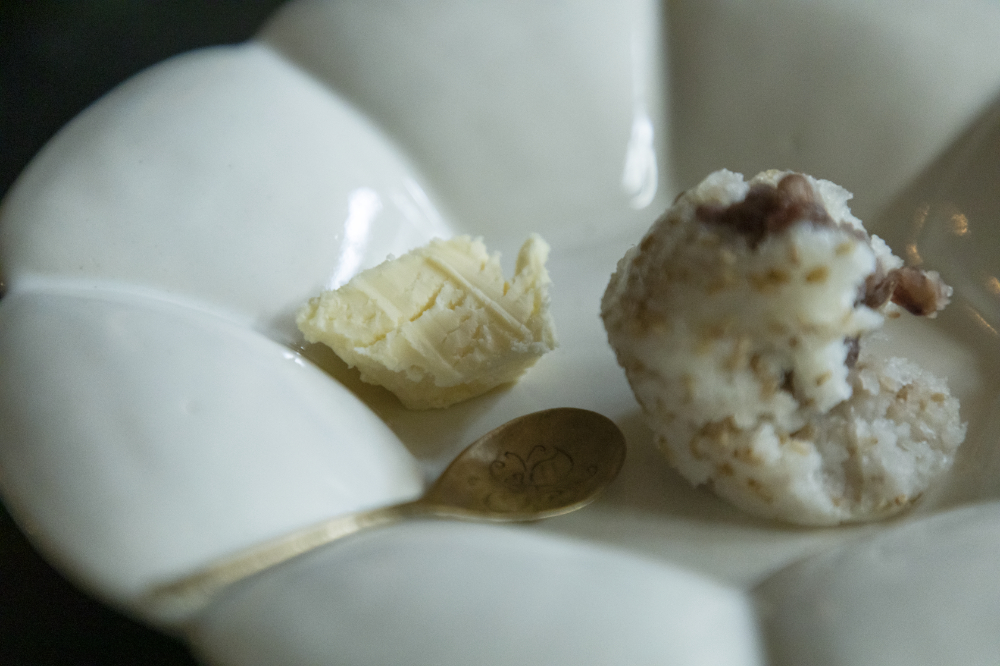
Kokonotsu is a place full of dynamic action; each dish is served with different teaware, crockery, and different forks or spoons. Mizoguchi sees the experience she provides as having much in common with a stage play or a concert.
“(Famous potter) Masanobu Ando used the expression ‘temporal art’ to describe what we do, and I think it fits perfectly. Rather than evaluating each dish in and of itself, I want people to take the entire two-hour experience and evaluate what they feel from the whole thing. I see it, in that respect, as being the same as a stage show, a concert, or a movie. The only difference is that the person experiencing the art form does so by eating. I don’t think of my salon as a restaurant at all; instead, I think of it as a place that offers its customers an experience, and I am delighted when my customers understand this and think the same way.”
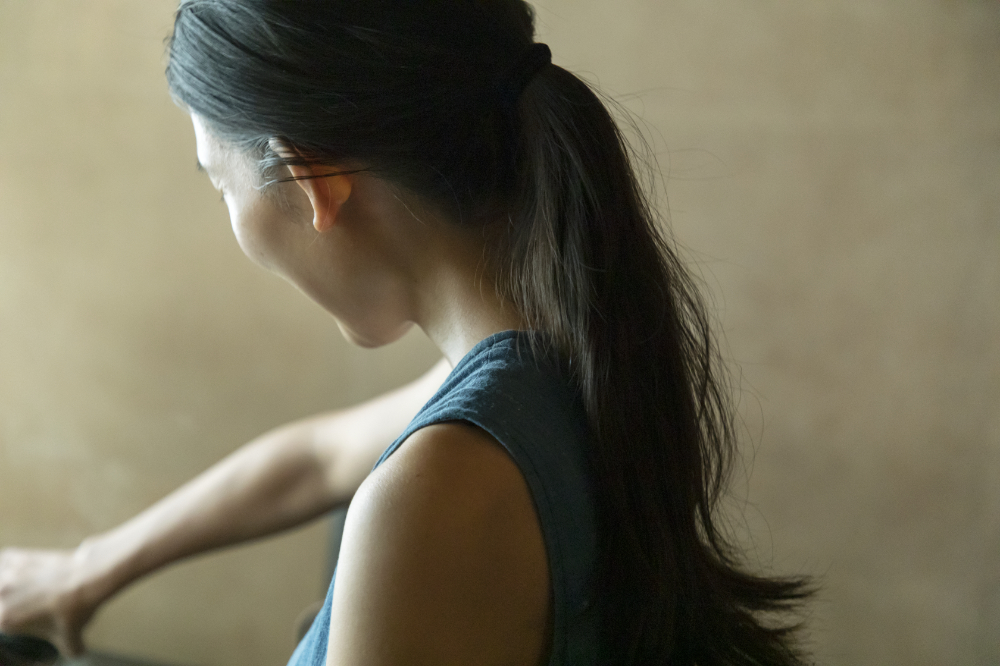
“Everyone feels things differently due to the experiences they have gone through in their lives to that point. Some people are inspired to go straight home and put what they have learned into practice, while others aren’t. I don’t wish to impose any rules on that front; people are free to do what they want. I just hope that my customers can take away something from the experience that will have a positive effect on their lives.”
As she serves each confection and each cup of tea, Mizoguchi talks to her customers, telling them about some of her own personal favorites, interesting recent experiences, or relevant memories from her younger days. All of this is done in such a natural way that, just as she desires, the experience is more than just a meal—it is something that will stay with the customer for a long time.
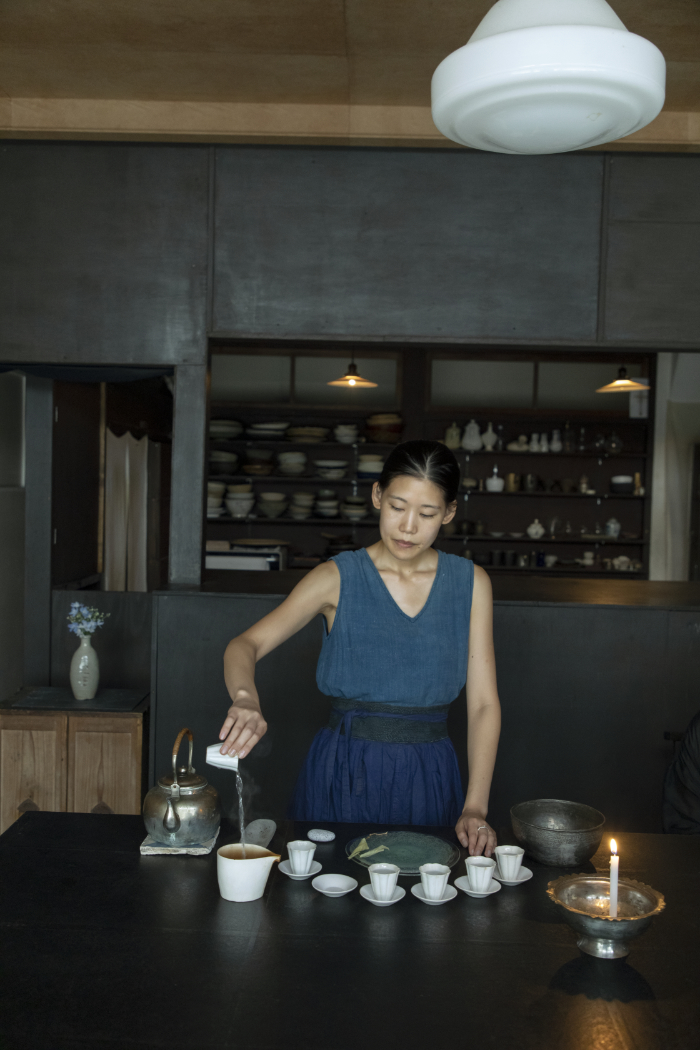
“I remember brewing tea from when I was very young. I had a tea box, and I would choose from the box the tea that would best match the sweets I had that day. I think that experience was significant in forming the basis of what I do today. I think I was drinking tea of high quality, too. I didn’t realize it at the time, of course, but I was lucky to be raised in such an environment.”
Even as she is reverently pouring tea into a cup made by Masanobu Ando, her movements remain fluid and composed without the slightest hint of unease, which is a tribute to the experience she gained in her childhood years.
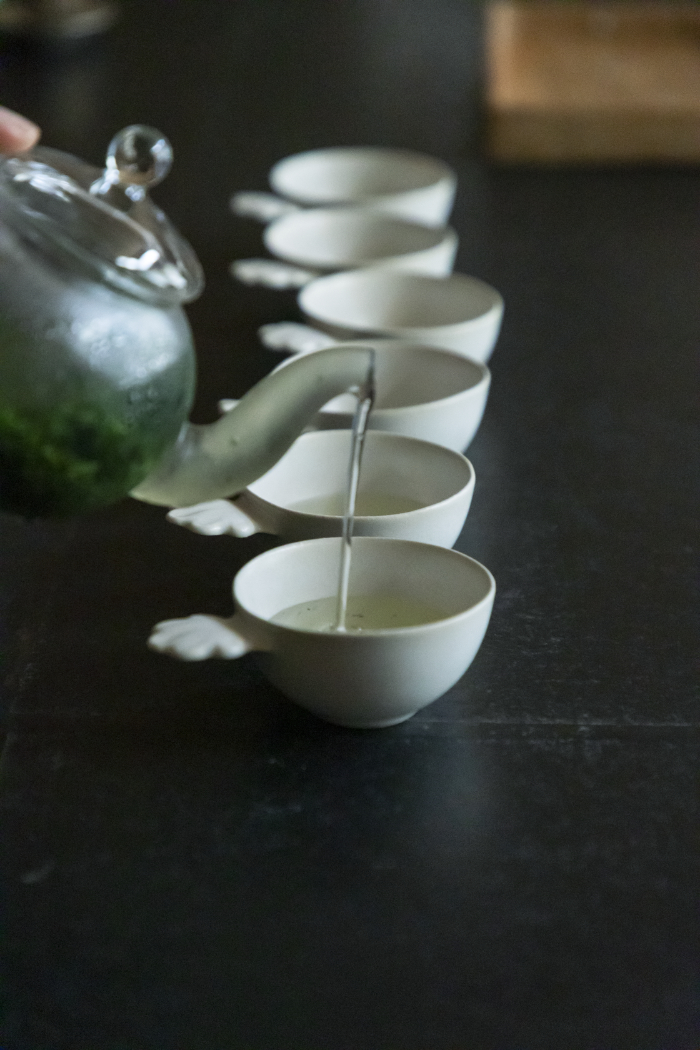
In addition to the karukan course showcased in the first half of this article, Mizoguchi has agreed to make one final special dish, just for CHAGOCORO: a savory confection making use of tea grounds. Stir-fried, the tea grounds are arranged atop a ball of glutinous rice mixed with red adzuki beans and decorated with sakura shrimp. It does not exactly look like it fits into the confectionery category, but when tasted, the hidden flavors of honey and Japanese pepper spread delightfully across the palate. This is paired with a sweet cup of gyokuro tea with powerful notes of umami. Until the very last, I am a willing passenger on a journey through Miho Mizoguchi’s world. Although my stomach is more than satisfied, I don’t want this experience of temporal art to ever stop.
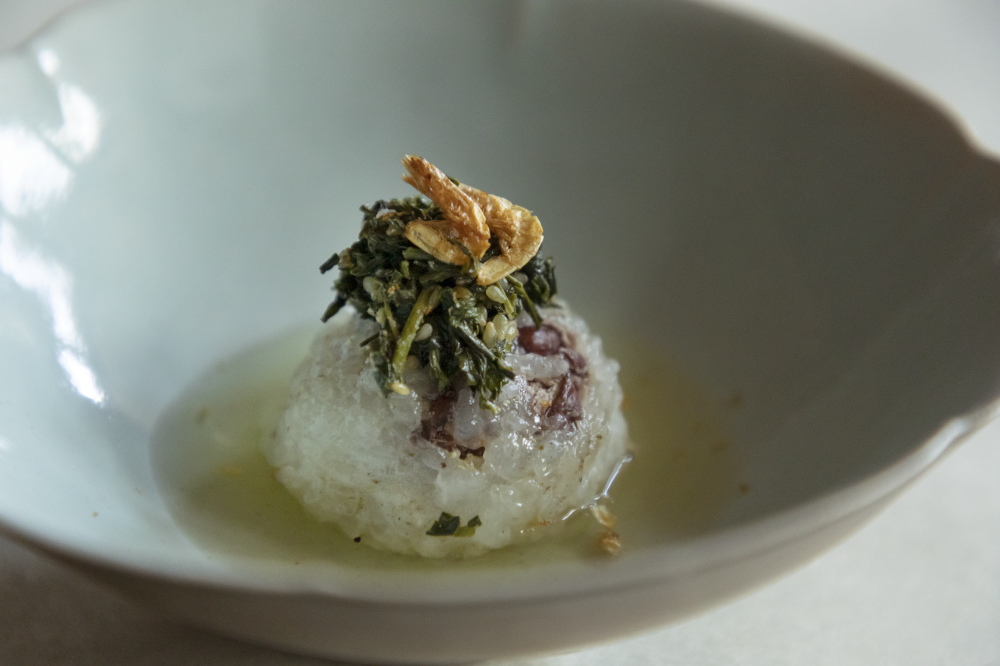
Kashiya Kokonotsu
A reservation-only tea salon where customers are served special multiple-dish confectionery courses created by proprietor Miho Mizoguchi. Many regular customers have become fans of the seasonal treats and fascinating stories Mizoguchi provides. In addition to her monthly wagashi course, she also offers a wide variety of other special experiences through her salon, including collaborations with other chefs, breakfasts, and her Personal Favorites series, in which she places the spotlight on one particular foodstuff.
See the below website for more details and reservation guidance.
kokonotsu-9.jugem.jp
www.instagram.com/_____9__/ (Instagram)
Photo: Norio Kidera
Text: Yoshiki Tatezaki
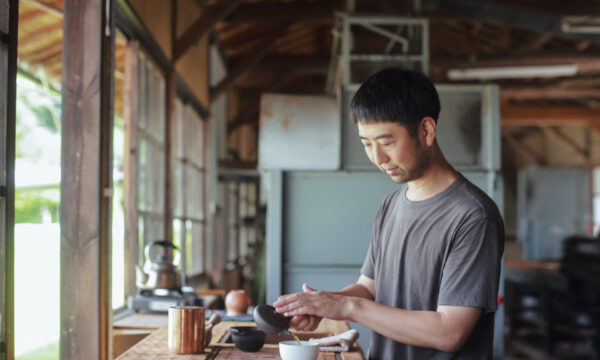
2024.09.20 Tea CraftsmenINTERVIEW
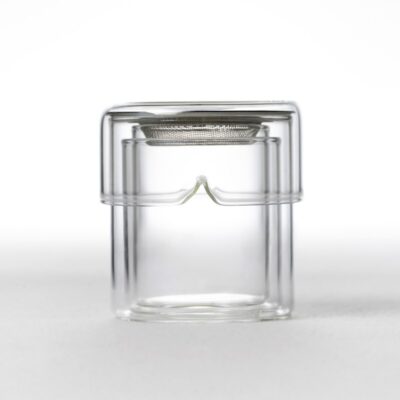
内容:フルセット(グラス3種、急須、茶漉し)
タイプ:茶器
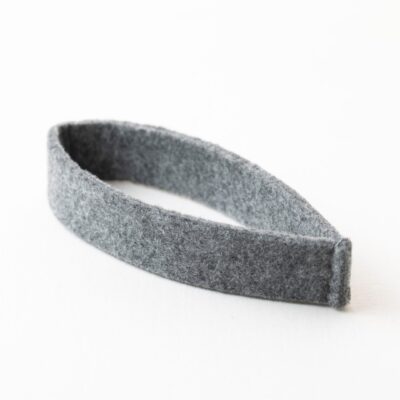
内容:スリーブ×1種(素材 ポリエステル 100%)
タイプ:カスタムツール